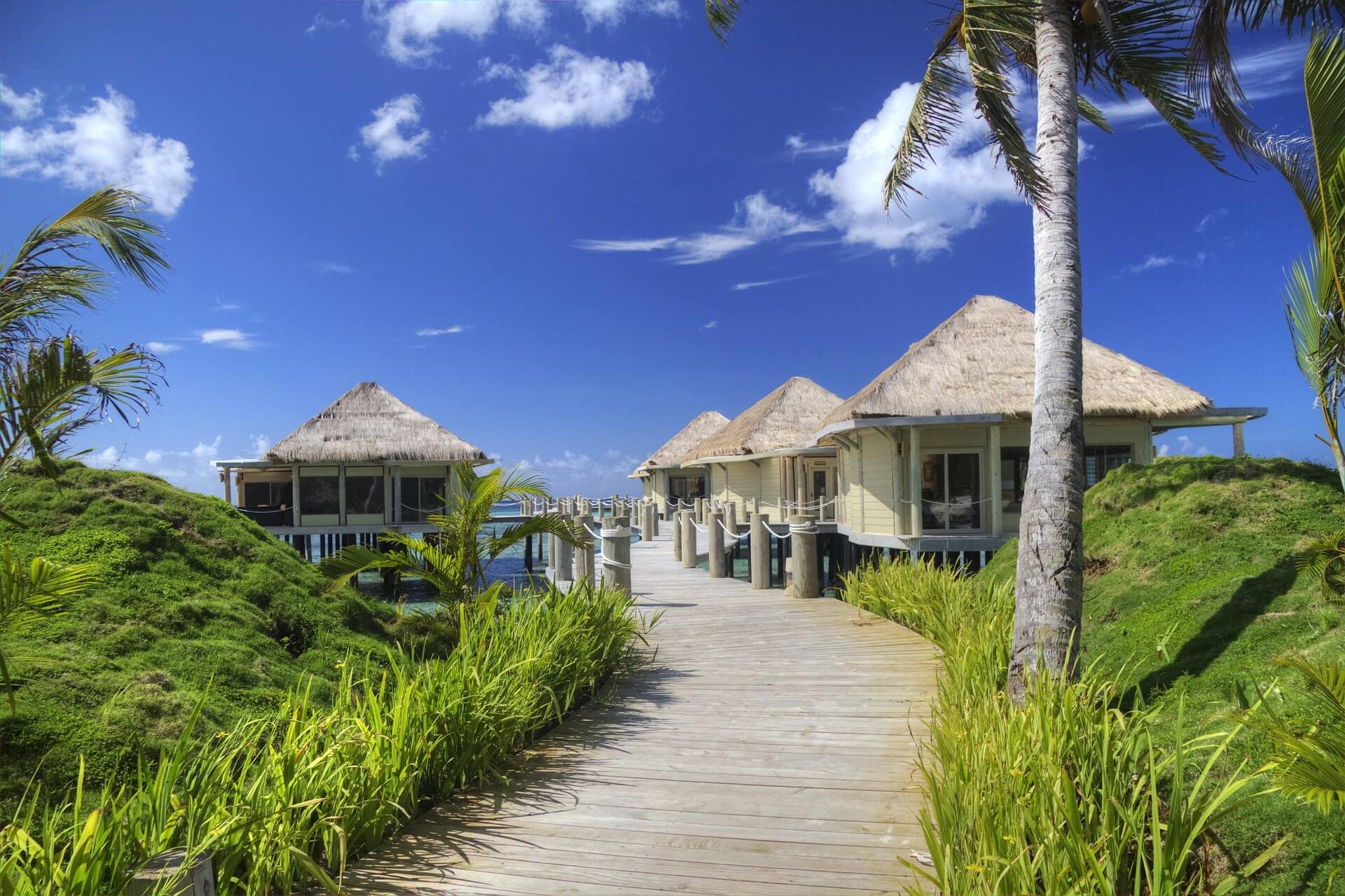Travel in Samoa

The heart of Polynesia — raw beauty, proud traditions, and endless waterfalls
Samoa is a place where time slows, the land remains sacred, and culture is not preserved in museums but lived daily. Located roughly halfway between Hawaii and New Zealand, Samoa is made up of two main islands — Upolu and Savai‘i — along with several smaller islets. It offers the kind of South Pacific experience that feels deeply rooted: dramatic coastlines, lush rainforests, open-air fale homes, and the fa‘a Samoa, or “Samoan way of life,” which still governs community and rhythm.
This is not a resort-driven island getaway. It’s a country that invites you to immerse, to wander quiet villages, to swim in volcanic pools beneath waterfalls, and to feel connected to something ancient and proud. From blowholes that shoot water 30 meters high to quiet Sunday mornings of church choirs and kava ceremonies, Samoa is equal parts wild and spiritual.
How to Get to Samoa
Most visitors arrive at Faleolo International Airport (APW) on Upolu Island, about 40 minutes west of the capital, Apia.
- Direct flights operate from Auckland, Sydney, Brisbane, Nadi, and occasionally Honolulu.
- Regional carriers like Fiji Airways, Qantas, and Air New Zealand connect Samoa with other Pacific islands and Australia/New Zealand.
- A separate state, American Samoa, lies 60 miles away and can be reached by ferry or short regional flights via Pago Pago.
Travel between Upolu and Savai‘i is easy — car and passenger ferries cross the Apolima Strait several times daily, and rental vehicles can be taken onboard.
What to See in Samoa
Start on Upolu, the more populated and developed island. Apia, the capital, is a pleasant town with colonial charm, vibrant markets, and historic landmarks like the Robert Louis Stevenson Museum, the writer’s former residence and tomb site. Just outside the city, the Papase‘ea Sliding Rocks and Mount Vaea Trail offer short but memorable excursions.
East and south of the island lie the natural treasures that define Samoa’s appeal. To Sua Ocean Trench, a deep volcanic swimming hole connected to the sea by lava tubes, is one of the most photographed sites in the Pacific. Surrounded by lush gardens and reached by ladder, it’s a magical place for a swim. Along the southern coast, you’ll find Lalomanu Beach, known for its dazzling white sand, vibrant coral reef, and local beach fale accommodations.
Drive west, and you’ll encounter waterfalls tumbling through jungle valleys, like Papapapaitai Falls, Togitogiga Falls, and Sopo‘aga Falls, all with easily accessible lookouts or swimming holes. The O Le Pupu-Pue National Park protects large swaths of rainforest and offers hiking through lava fields, rainforest, and ridge viewpoints.
Cross to Savai‘i — the “big island,” known for its slower pace and raw natural energy. The Afu Aau Waterfall, tucked in the island’s south, is a dreamy swimming spot in a jungle setting. The Saleaula Lava Fields, created by eruptions in the early 20th century, are haunting and beautiful. Nearby, the Alofa‘aga Blowholes shoot seawater sky-high through lava tubes — a thrilling natural spectacle.
What to Do in Samoa
Samoa offers the best of both relaxation and soft adventure.
Swimming in ocean trenches, kayaking along reef lagoons, snorkeling with turtles, or simply reading a book in a beach fale under the shade of palms — all are part of daily life here. Coral reefs along Lalomanu, Manono Island, and parts of Savai‘i offer rewarding snorkel spots.
Land activities include guided hikes, village stays, and cultural shows. Many families offer day visits to experience fa‘a Samoa firsthand: traditional cooking in an umu (earth oven), demonstrations of weaving and tattoo, and the chance to participate in ava (kava) ceremonies.
Don’t miss the opportunity to attend a Sunday service in a village church — even if you’re not religious, the singing and atmosphere are powerful and welcoming.
When to Visit Samoa
Samoa is warm year-round, with average highs around 28–30°C (82–86°F).
- Best time to visit: May to October (dry season) — more sunshine, less humidity, and calmer seas.
- Wet season: November to April — lush and vibrant, but with tropical downpours and higher chance of cyclones.
Festivals like Teuila Festival (September) and Independence Day (June 1) are great times to visit for dance, music, and national pride.
Travel Tips for Samoa
- Currency: Samoan Tala (WST)
- Languages: Samoan (widely spoken), English (official)
- Transport: Renting a car is the best way to explore independently. Local buses are colorful but irregular.
- Connectivity: Wi-Fi and mobile coverage are fair on Upolu; Savai‘i has patchier service. SIM cards are available at the airport and in Apia.
- Cultural respect: Samoa is traditional — wear modest clothing in villages, remove shoes when entering a home, and avoid loud activity on Sundays.
Samoa is both accessible and undiscovered. It offers all the beauty you expect from the South Pacific — waterfalls, coral reefs, empty beaches — but with the added depth of living tradition, spiritual landscapes, and community warmth. It’s a place where your days are marked by the sun and tides, and your nights by firelight, storytelling, and the sound of waves. Samoa doesn’t need to try to impress — it just is.